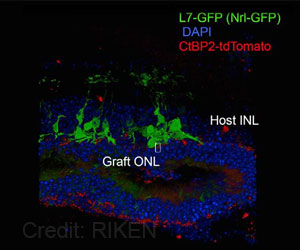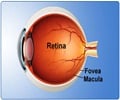Can repurposed drugs treat retinal degeneration? A new study shows a combination of tamsulosin, metoprolol, and bromocriptine reduces disease progression.
- Drug repurposing uses existing medications for new therapeutic purposes, offering a promising approach for treating inherited retinal degenerations (IRDs)
- A combination of tamsulosin, metoprolol, and bromocriptine significantly slowed disease progression in pre-clinical retinopathy models
- The combination therapy works by inhibiting hyperactive intracellular secondary messengers, showing potential for treating other multifactorial disorders
A combination treatment based on drug repurposing demonstrates mutation-agnostic efficacy in pre-clinical retinopathy models
Go to source).
What is Drug Repurposing?
Drug repurposing is the use of existing medications to treat diseases or conditions for which they were not originally designed or approved. The current study looked at therapeutic repurposing in the context of inherited retinal degenerations (IRDs).What are Inherited Retinal Degenerations?
Inherited retinal degenerations (IRDs) are a category of hereditary illnesses that induce degeneration of retinal structure and function, resulting in progressive vision loss and, in some cases, blindness. Most IRDs are currently therapeutically unavailable, creating an unmet medical need for a large population worldwide.Combination Treatment Reduces Retinopathy Progression
The researchers discovered that a combination treatment containing three medications greatly slowed illness progression and reduced disease presentation in four different animal models of IRD. The combination contained the blood pressure and heart failure drugs metoprolol, tamsulosin, which is used to treat benign prostatic hyperplasia, and bromocriptine, a Parkinson’s disease medicine that is currently less often used."In drug repurposing, it does not matter which diseases or conditions the drugs were originally developed for, but it is the molecular-level effects of drugs, or pharmacology, that count," says the article’s first author, Dr. Henri Leinonen, currently Adjunct Professor of Neuropharmacology at the University of Eastern Finland and previously Postdoctoral Researcher at the University of California, Irvine.
In retinal degenerations, intracellular secondary messengers such cyclic adenosine monophosphate and calcium are thought to be hyperactive, aggravating the condition. Metoprolol, tamsulosin, and bromocriptine inhibit the function of these secondary messengers through unique cell membrane-receptor interactions.
It is worth noting that none of the medications employed in the trial were effective against retinal degeneration on their own; therefore, their combination was required for success. According to Dr. Leinonen, the same phenomenon may apply to many currently untreatable conditions, and efficient treatment, particularly in multifactorial disorders, may necessitate the administration of numerous medications at the same time.
Drug Repurposing Offer Options For the Treatment of Rare Disorders
Rare diseases, including IRDs, are rarely of great interest to the pharmaceutical sector due to a lack of economic incentives. However, medication repurposing, an important research issue in academia, is a promising strategy for finding remedies for uncommon diseases that are now therapeutically inaccessible.Reference:
- A combination treatment based on drug repurposing demonstrates mutation-agnostic efficacy in pre-clinical retinopathy models - (https://www.nature.com/articles/s41467-024-50033-5)
Source-Medindia












